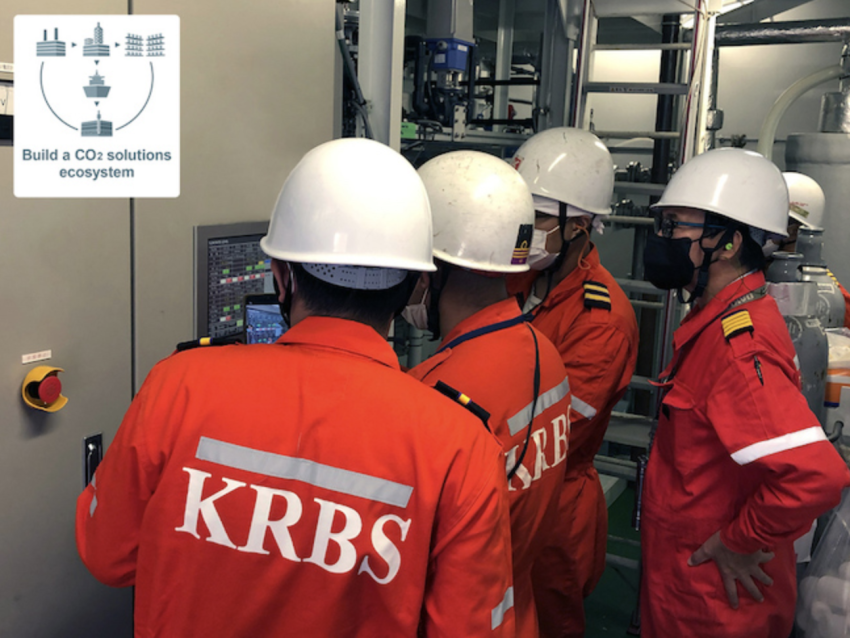Mitsubishi Shipbuilding successfully separates and captures CO2 from exhaust gas

Mitsubishi Shipbuilding Co Ltd, a part of Mitsubishi Heavy Industries (MHI) Group, has successfully separated and captured carbon dioxide (CO2) from the exhaust gas emitted from the engines of a ship equipped with a small-scale CO2 capture demonstration plant, as part of the "Carbon Capture on the Ocean" (CC-Ocean) project (1) for verification testing of a marine-based CO2 capture system, conducted in cooperation with Kawasaki Kisen Kaisha Ltd and Nippon Kaiji Kyokai. The captured CO2 had a purity (2) of more than 99.9%, achieving performance in line with plan.
This project is conducted aboard the Corona Utility, a coal carrier for Tohoku Electric Power Co Inc operated by Kawasaki Kisen. The data provided will be used as a benchmark for practical application of marine-based CO2 capture systems. The small-scale CO2 capture demonstration plant installed on the ship is a system for onshore plants that was adapted for marine use. The success in achieving CO2 capture performance in a marine environment as planned enhances the potential for practical application of marine-based systems.
In early August, after the small-scale CO2 capture demonstration plant was installed on the ship, engineers from Mitsubishi Shipbuilding remained on the vessel to operate and maintain the system. They also instructed the ship crew on the operation of the plant, as well as conducted measurements and analysis of the exhaust gas and captured CO2, and evaluated the system performance. From mid-September through the end of fiscal 2021, the ship crew will continue to operate the system and take measurements in the world's first trial of CO2 capture by ordinary crew during commercial operation of a marine vessel. Mitsubishi Shipbuilding will confirm the safety and operability of the system based on knowledge gained from these verification tests, and work to develop an actual commercial system.
MHI Group is pursuing a range of strategic measures to strengthen businesses related to energy transition, and establishing a CO2 ecosystem is a key part of this effort. Carbon dioxide capture, utilization, and storage (CCUS) is attracting attention as an effective means to achieve a carbon neutral society. Mitsubishi Shipbuilding, in response to these demands, is continuing its efforts to reduce greenhouse gas (GHG) emissions from ships and other types of marine equipment, in order to contribute to environmental conservation, and the realization of a carbon neutral society on a global scale.
(1) This project is being conducted with support from the Maritime Bureau of Japan's Ministry of Land, Infrastructure, Transport and Tourism (MLIT), as part of its assistance project for research and development of technological advancements in marine resource development.
(2) The purity of the CO2 captured by the CO2 capture system. When a onshore plant captures CO2 with a purity of more than 99.9%, the captured CO2 can be used in a wide range of applications, including chemical processes to enhance production of fertilizer or methanol, general use such as dry ice for cooling, and enhanced oil recovery (EOR) to increase crude oil production. Measurement of the exhaust gas emitted from ship's engines
Tags :
Previous Story
- Lofty prices for natural gas may fuel a...
- BPC plans to build an innovative LPG terminal...
- Gas-starved Bangladesh, one of the fastest-growing LNG markets...
- CPA may waive dues of LNG terminals, carriers
- Bangladesh compiling spot LNG shortlist
- Gas, tobacco segments: Tax income receipts drop in...
- Bangladesh waitlists 17 organizations for spot LNG
- Bangladesh needs pipeline gas with big investment